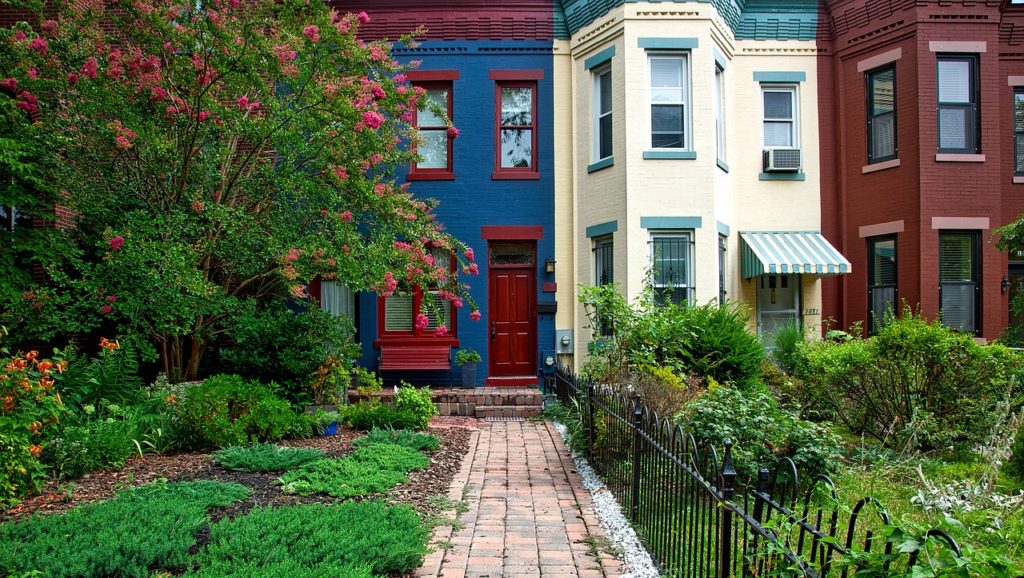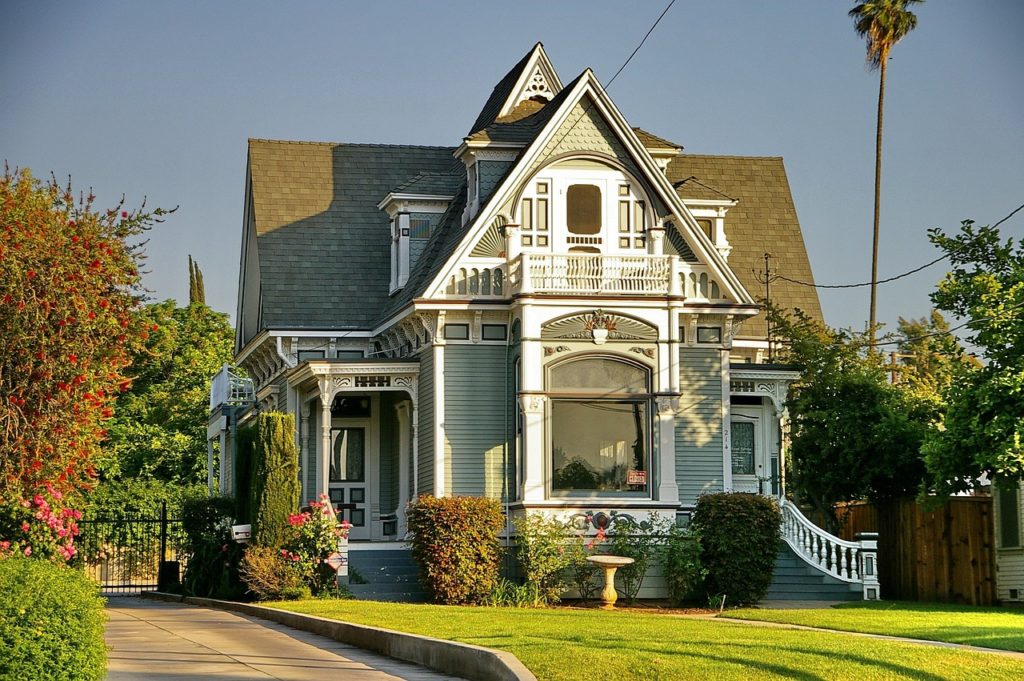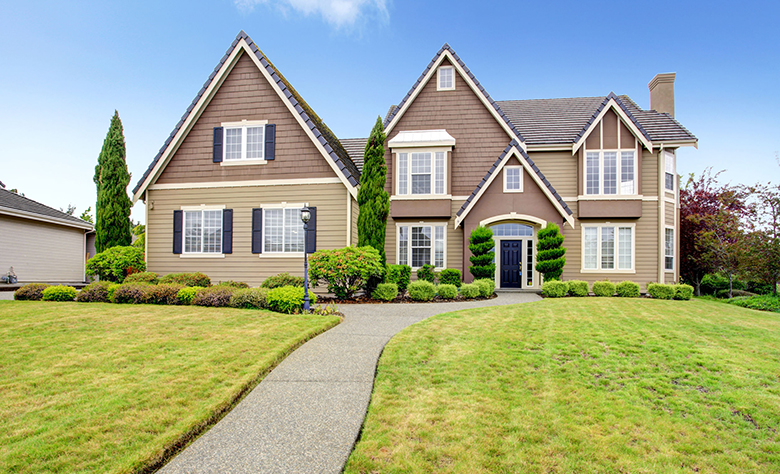Unlike interior color scheme, the exterior paint palette is governed by completely different principles. The hardscaping around your house together with the roofing and surroundings can affect your choice and have an impact on the neighborhood. Not to mention that painting the outside of your home is a massive undertaking. However, these easy tips will help you make the right choice when it comes to your exterior paint palette.
What Will the Neighbors Think?
Even though the exterior of your house is your own, you should take into consideration the paint scheme of your neighborhood before making the final choice. Scan the area and determine the prevalent palette. This doesn’t mean you should use the same shade of white, grey, or chestnut, but you also don’t want to go blazing red, either. The best course of action is to use the main color scheme, and build on it. Essentially, that will please both your unique sense of style, and your next-door neighbors.

Don’t Cramp Your Home’s Style
Another important thing to consider is the architectural style of your home and the period in which it was built. Depending on where you live, the most popular housing styles can range from basic traditional, like Craftsman or Ranch, to more intricate designs, like Colonial Revival or Victorian. The less intricate your home’s architectural design is, the less color it will have. However, the best way to find out what works best for the style of your house is to determine which period it belongs to, and research the color palette of that particular style.
Connect the Exterior Elements
When it comes to the exterior of your home, some elements are harder to change. Unless you are doing a complete renovation of the house, you are likely to take into consideration various surface textures and colors when making the decision. Roof tiles and shingles, existing masonry, paths and driveways, building material, will all remain fixed. To achieve a perfect match, look for hues between the various elements that could connect them and harmoniously bring them together. Alternatively, if you are set on a particular color, you can choose to use quality water-resistant concrete paint and shingle coating to achieve your goal.

Three Shades of Color
In contrast to the interior which can have a single color scheme, most exterior paint schemes have three major color elements: field color, accent color, and trim color. Field color is the main color that dominates the entire exterior. You will need completely contrasting colors for the window and door frames, railings, roof edges and other trim works. Essentially, trim colors are used for dramatic effect. So, if your field color is darker consider a lighter and paler color, and vice-versa. Finally, you should use an accent color for your doors, window shutters and other surfaces you wish to highlight, which adds depth to the entire paint scheme. The accent color can be a complimentary tone, but don’t be afraid to make a bold statement with an intense bright color, either.
What You See Isn’t Always What You Get
Similar to interior paint palettes, exterior colors can be notably different from the way they appear on the paint chip at the store. Still, exterior paint is different to interior paint, slightly more expensive, and reacts differently once painted. In turn, this can alter the hue you see on the paint chip, and the actual shade of paint you will receive. Instead of immediately buying bucket-loads of paint, buy the smallest amount of that particular hue available. Paint a small amount directly onto the desired surface and see how it reacts in contact with the surface and light. Trial and error is the only way you will get the actual color scheme you desire, but it works every time.
Ultimately, be brave and bold when choosing the color scheme for the exterior of your home. Use these easy tips to pick out the ideal color palette, one that will make you proud and catch the eye of anyone passing by your house, for years to come.

